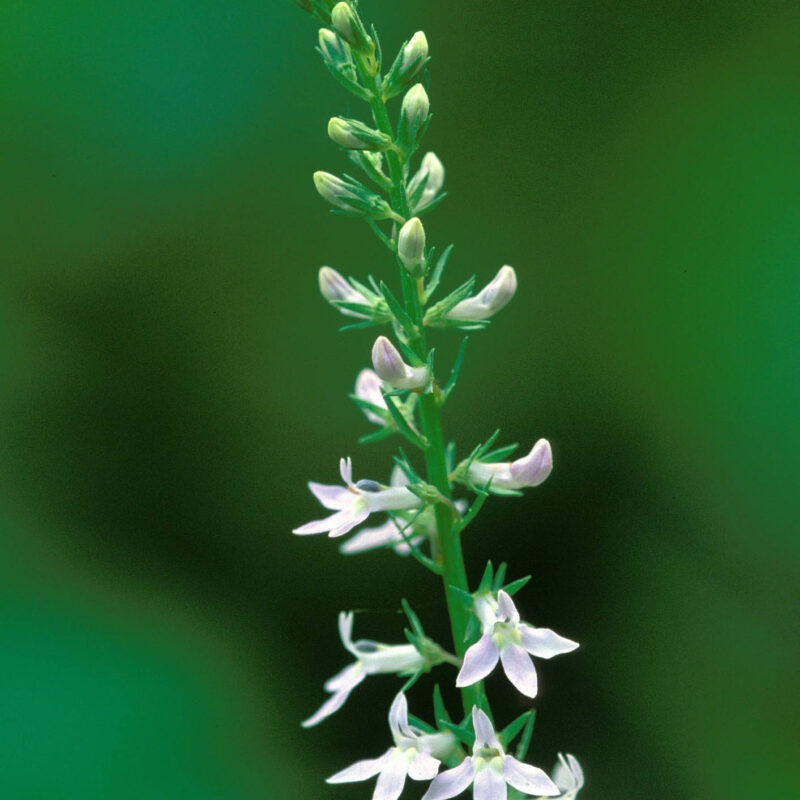Pale-spike LobeliaLobelia spicata
Pale Spiked Lobelia is a short-lived perennial found in savannas and prairies. Its delicate stems bend and twist as it grows taller. It is mostly pollinated by smaller bees.
USDA symbol: LOSP
General Information
| Plant Type | Forb |
|---|---|
| Height | 1 to 2 feet |
| Light Exposure | Sun |
| Soil Moisture | Dry |
| Bloom Color | Blue |

Tolerances
| Flooding / Inundation Tolerance | High |
|---|---|
| General Resilience | 5 |
| Salt Tolerance | Medium |
| Stress Tolerance | Drought Tolerant, General Disturbance |
Pollinator Value: High
| Bloom Months | August to September |
|---|---|
| Pollinator Benefit | Insect Pollinated, Provides Nectar, Supports Specialists |
Project Planning
| Project Type | Rain Garden, Shoreline Buffer |
|---|---|
| Coefficient of Conservatism | 6 |
| Herbivore Sensitivity | High |
| Lifespan | Perennial |
| Rate of Spread | Slow |
| Soil Stabilization | Deep |
| Vegetative Reproduction | Weakly Clonal |
Range
| County | Aitkin, Anoka, Becker, Benton, Blue Earth, Brown, Carver, Chippewa, Chisago, Clay, Cottonwood, Dakota, Dodge, Douglas, Faribault, Fillmore, Freeborn, Goodhue, Grant, Hennepin, Houston, Isanti, Itasca, Jackson, Kandiyohi, Kittson, Koochiching, Lac qui Parle, Lake, Lincoln, Lyon, Mahnomen, Marshall, Martin, McLeod, Meeker, Mille Lacs, Morrison, Mower, Murray, Nicollet, Nobles, Norman, Olmsted, Otter Tail, Pennington, Pine, Pipestone, Polk, Pope, Ramsey, Red Lake, Redwood, Renville, Rock, Roseau, Sherburne, Sibley, St. Louis, Stearns, Steele, Stevens, Swift, Traverse, Wabasha, Waseca, Washington, Watonwan, Wilkin, Winona, Wright, Yellow Medicine |
|---|---|
| Ecoregion | Driftless Area, Lake Agassiz Plain, North Central Hardwood Forests, Northern Glaciated Plains, Northern Lakes and Forests, Northern Minnesota Wetlands, Western Cornbelt Plains |
| Approximate Eco Province | Eastern Broadleaf Forest, Laurentian Mixed Forest, Prairie Parkland, Tallgrass Aspen Parklands |
